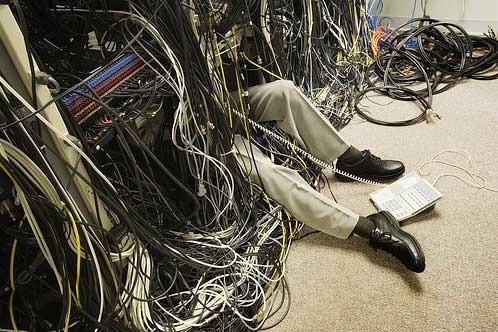The Importance of Data Centers in Our Connected World
2 min read


If you don’t have the right team to build and operate a data center, things can quickly fall apart. We all expect our devices to respond instantly and our streaming to run smoothly, but most people don’t realize how crucial data centers are in making that happen.
The secret to ultra-fast networking speeds? Proximity to a data center. The closer you are to the source of the data you’re accessing, the less latency—or delay—you’ll experience. That’s why data center operators work tirelessly to minimize delays and maintain high-speed computing. But if proximity is so important, why aren’t data centers on every street corner?
Let’s dive into why data center locations matter and how thousands of unseen professionals are working to design, build, and maintain these critical facilities in the best possible locations.
Why We Need Data Centers
Without data centers, the technologies we rely on—streaming, cloud computing, AI—wouldn’t exist. Everything we enjoy in today’s digital society depends on the cloud, and the cloud relies on data centers.
Looking ahead, the industry is poised for significant growth. In the next decade, we’ll likely see larger campuses and facilities. Bigger data centers can often achieve greater economies of scale, making them more efficient and cost-effective.
Key Factors for Data Center Locations
Latency Matters
Latency refers to the time it takes for data to travel from one point to another. Most data in the U.S. travels via optical fiber, limited by the speed of light. When working remotely or streaming, data must move quickly and efficiently to avoid delays. This is why data centers are strategically placed across the country.
Power and Connectivity
Power is the lifeblood of any data center, and fiber-rich environments are essential. Data centers are often built near points where fiber networks converge, ensuring reliable connectivity.
Community Considerations
Responsible development is key. This includes minimizing noise from generators, screening mechanical infrastructure, and working with municipalities to ensure data centers integrate well into the community.
Skilled Labor
People are the backbone of data center operations. Site selection often involves evaluating local universities and industries that can supply skilled workers familiar with mission-critical environments.
Natural Disaster Resistance
Data centers must be located in areas resistant to natural disasters. Advanced analytics help identify sites that minimize risks like earthquakes, floods, and hurricanes.
Global Data Center Trends
In the U.S., data centers are typically larger than those in other parts of the world. While developing regions like Latin America, Africa, and parts of Asia have fewer data centers, expanding their presence is essential to delivering advanced services globally.
The Future of Data Centers
The industry is moving toward more efficient computing with less energy use. Advances in server technology and sustainability will enable the deployment of AI in ways we can’t yet imagine. As long as we continue streaming, working remotely, and using digital tools, data centers will remain indispensable.
In short, data centers are the invisible backbone of our digital lives, and their importance will only grow as technology evolves.
Get in touch with us
Let's find perfect real estate for your data center in Florida.
Northern & Central Florida
Jacksonville - orlando - tampa
andrey@datacenteragent.com
331-399-2365
© 2024. All rights reserved.
